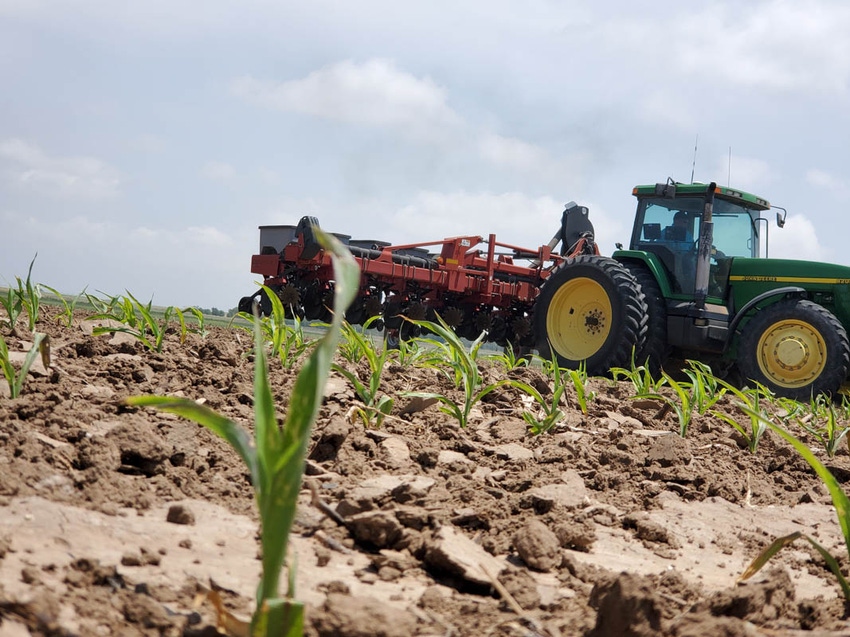
What a difference a few months have made for Texas High Plains agricultural producers under the financial and other strains brought on by the COVID-19 pandemic.
“COVID-19 has definitely had a negative impact on agriculture,” said DeDe Jones, Texas A&M AgriLife Extension Service risk management program specialist, Amarillo. “While speaking at producer meetings in January, there was much optimism over the China trade deal and hopes for a good marketing year. By April producers were wondering if their commodities would even bring enough to cover operating expenses. It’s a tough situation.”
Amid these tough financial times, Jones encourages producers to take advantage of AgriLife Extension’s Financial and Risk Management decision aid or FARM Assistance program.
“Developing a good set of long-term financial plans and simulating the most profitable scenario will go a long way when farmers and ranchers meet with their bankers this year,” she said.
Jones published “Analyzing the Impact of COVID-19 on Texas High Plains Agriculture” written in conjunction with AgriLife Extension risk management economists Steven Klose, College Station; Will Keeling, Lubbock; and Greg Kaase, College Station.
The publication utilizes the latest information from the Agricultural and Food Policy Center at Texas A&M to see how COVID-19 could impact Texas High Plains producers.
Scenario in the High Plains
“Basically, we took six FARM Assistance case study model farms that the county agents and I developed, and then ran them under pre- and post-COVID projections provided by the TAMU Policy Center,” she said.
FARM Assistance is a pro forma financial analysis that incorporates stochastic simulation to analyze price and yield risk. It is aimed at helping farmers and ranchers with strategic planning and risk management, Jones said.
While this publication focuses on case study model farms designed to represent six production regions of the Texas High Plains, FARM Assistance is an analysis service available to all Texas producers, Jones said. Its purpose is to help farmers and ranchers with decision making and long-term planning. This decision aid is especially useful during times of uncertainty.
Study results provide a 2020 farm financial outlook under pre- versus post-COVID-19 conditions and represent a general economic overview for area producers. As expected, results indicate substantial reductions in farm profitability and liquidity due to the pandemic’s effect on agriculture.
Analysis results
While a few farm expenses, primarily those influenced by reduced fuel costs, are projected to fall in the COVID-19 scenario, the major impact on model operations was lower commodity and livestock prices and reduced revenues, Jones said.
She said farm program payments will grow with these declines in crop prices, but even with higher government payments, agricultural profits will likely be hit hard in 2020. Much of the government payment increase this year will come from an elevated likelihood of higher loan deficiency payments or marketing loan benefits in cotton. Price Loss Coverage, or PLC, payments received in 2020 are only marginally higher as they are based on 2019 crop marketing year prices.
“When the economic impacts of COVID-19 began in March, the bulk of the 2019 crop was already sold, meaning the marketing year average price that triggers PLC was mostly established,” Jones said. “The 2020 crop marketing year prices should trigger higher PLC payments, but those will not be made until the fall of 2021. As a result, they will do little to alleviate the immediate cash flow problems producers could experience.”
Across all six model farms, net cash farm income exhibits an average 23% decline. The ranching model operation shows the largest income drop due to greater decreases in livestock prices relative to crop prices and a lack of conventional support payments. Each entity also demonstrates a loss of equity and reduction in ending cash reserves in the COVID-19 scenario.
The analysis does note, however, that even under pre-COVID-19 conditions most farms show negative cash balances due to high levels of carryover debt coming into 2020 resulting from low market prices in recent years, Jones said.
“This situation worsened as prices fell even more due to COVID-19 impacts, creating an overall increase in cash flow problems and liquidity risk,” she said. “We expect producers to have increased difficulty paying off operating note balances at the end of 2020 and greater struggles with loan renewals in 2021.”
For more information about the FARM Assistance program, contact Jones at 806-681-5145, or any local AgriLife Extension agricultural agent.
Source: is AgriLife TODAY, which is solely responsible for the information provided and is wholly owned by the source. Informa Business Media and all its subsidiaries are not responsible for any of the content contained in this information asset.
About the Author(s)
You May Also Like




